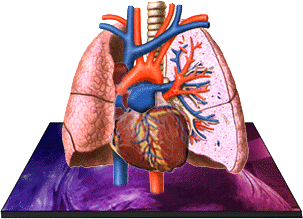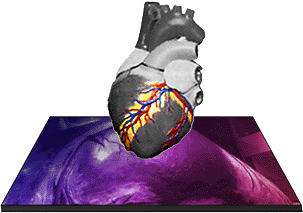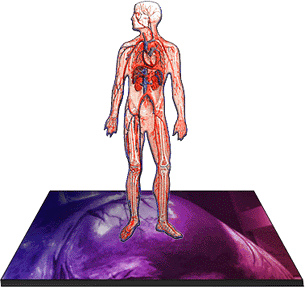


Sport Injury
Playing sports is a lot of fun. Getting hurt is not. Take these five steps to prevent injuries so you can stay in the game:
1. Wear protective gear, such as helmets, protective pads, and other gear.
2. Warm up.
3. Know the rules of the game.
4. Watch out for others.
5. Don't play when you're injured.
1. Wear Protective Gear
Protective gear is anything you wear that helps keep you from getting hurt. The gear you wear depends on the sport you play
Other sports require eye protection, mouth guards, pads, wrist, elbow, and knee guards, and a protective cup (for boys only). And don't forget your feet. Cleats are worn in football, baseball, softball, and soccer. These shoes have special rubber or plastic points on the soles to help your feet grip the ground when you run around.
2. Warm Up
It's not a good idea to just bolt on to the field and start playing. You shouldn't even start stretching until you're a little warmed up. So take a light jog to get loosened up and ready to play.
Doing some stretching also can get you prepared to hit the field. By warming up, you get yourself ready to play. Warming up your muscles and practicing a sport help keep you safe, too. Warm-ups that last 15 to 30 minutes and include slow, gradual stretching help lengthen your muscles and increase your blood flow and muscle temperature. That way, your muscles are ready to go and are much less likely to get hurt.
3. Know the Rules of the Game
When players know the rules of the game - what's legal and what's not - fewer injuries happen. You and the other players know what to expect from each other. For instance, you know that in soccer you can't come from behind, crash into a player's legs, and steal the ball. It's legal - and safer - to go after the ball rather than the player.
With sports that use plays, it helps to understand the plays and what your role is in each one. Being where you're supposed to be can help you stay out of harm's way, too.
4. Watch Out for Others
Some rules don't have anything to do with scoring points or penalties. Some rules are just about protecting other people and being polite. For instance, a diver would make sure that the pool was clear before diving in. Otherwise, he or she might land on someone else.
One way you can watch out for others is to communicate on the field. Listening to your coach during a game also can help keep you safe. It's also good to just be courteous, like telling someone his or her shoe is untied. Check your shoes, too!
5. Don't play when you’re injured
This is a really important one. If you love sports, it's tempting to get right back in the game, even after an injury. But playing when you're hurt - or before an injury has had a chance to fully heal - is a bad idea. It can lead to an even worse injury, one that might sideline you for a long time. Be honest with parents and coaches if you've been hurt. See a doctor for your injuries, when necessary, and follow his or her advice about how and when to return to practice and play.
Now you know what kids need to know about staying safe. Hopefully, if you follow rules 1, 2, 3, and 4, you won't need number 5. Or at least not quite as often!
Injury prevention tips
- Avoid training when you are tired
- Increase your consumption of carbohydrate during periods of heavy training
- Increase in training should be matched with increases in resting
- Any increase in training load should be preceded by an increase in strengthening
- Treat even seemingly minor injuries very carefully to prevent them becoming a big problem
- If you experience pain when training STOP your training session immediately
- Never train hard if you are stiff from the previous effort
- Pay attention to hydration and nutrition
- Use appropriate training surfaces
- Check training and competition areas are clear of hazards
- Check equipment is appropriate and safe to use
- Introduce new activities very gradually
- Allow lots of time for warming up and cooling off
- Check over training and competition courses beforehand
- Train on different surfaces, using the right footwear
- Shower and change immediately after the cool down
RICE
By applying ice or cooling immediately after an injury involving damage to soft tissues, the level of swelling and amount of blood allowed to leak out may be substantially limited. This will also be assisted by compression, elevation and rest.
- Ice - Apply ice for up to 10 minutes as soon after the injury as possible - do not wait for the swelling to start. This may be repeated every 2 hours during the first two days after injury. It is important not to keep the ice on any longer than 10 minutes as the body then reacts by increasing blood flow to warm the area and therefore exacerbating the swelling. Do not apply ice directly to the skin. Use a wet flannel
- Compression - After ice, apply a compression bandage to help minimize the swelling to the tissues
- Elevation - Elevate the injured part to help limit blood flow and prevent use of muscles to injured part
- Rest - the injured part as much as possible to allow the healing of damaged tissues
Failure to do this means that the period of recovery from injury may be considerably extended whilst the swelling and removal of dead tissue and blood cells is dealt with. If severe and not properly managed, these may create long term problems for the athlete.
Use of Ice
When applying ice, never do so directly onto the skin as this may result in ice burns to the skin. Wrap the ice in a damp cloth (a dry cloth will not transmit cold effectively). There is ongoing, debate over how long, to apply ice and current research suggests that during the acute phase (i.e. first 24-48 hours after injury), and 10 minutes is the maximum time needed and may be adjusted downwards according to the depth of tissues it is being applied too. Application for the appropriate time must be repeated every 2 hours during the acute phase. Once only, after injury is not enough!
Common Types of Sports Injuries
1- Muscle sprains and strains
A sprain is a stretch or tear of a ligament, the band of connective tissues that joins the end of one bone with another. Sprains are caused by trauma such as a fall or blow to the body that knocks a joint out of position and, in the worst case, ruptures the supporting ligaments.
2-Tears of the ligaments that hold joints together
3-Tears of the tendons that support joints and allow them to move
4-Dislocated joints
When the two bones that come together to form a joint become separated, the joint is described as being dislocated.
5- Fractured bones, including spine.
A fracture is a break in the bone that can occur from either a quick, onetime injury to the bone (acute fracture) from repeated stress to the bone over time (stress fracture).
Knee Injuries
Because of its complex structure and weight-bearing capacity, the knee is the most commonly injured joint.
Each year, more than 5.5 million people visit orthopedic surgeons for knee problems.

Knee injuries can range from mild to severe. Some of the less severe, yet still painful and functionally limiting, knee problems are runner’s knee (pain or tenderness close to or under the knee cap at the front or side of the knee. More severe injuries include bone bruises or damage to the cartilage or ligaments. The four major ligaments that support the knee are the anterior cruciate ligament (ACL), the posterior cruciate ligament (PCL), the medial collateral ligament (MCL), and the lateral collateral ligament (LCL). (See diagram) Knee injuries can result from a blow to or twist of the knee; from improper landing after a jump; or from running too hard, too much, or without proper warm-up.
The Circle of Blood
On average, your body has about 5 liters of blood continually traveling through it by way of the circulatory system. The heart, the lungs, and the blood vessels work together to form the circle part of the circulatory system. The pumping of the heart forces the blood on its journey.
The body's circulatory system really has three distinct parts: pulmonary circulation, coronary circulation, and systemic circulation.Or, the lungs (pulmonary), the heart (coronary), and the rest of the system (systemic). Each part must be working independently in order for them to all work together.
It's All in the Lungs

Pulmonary circulation is the movement of blood from the heart, to the lungs, and back to the heart again. This is just one phase of the overall circulatory system.
The veins bring waste-rich blood back to the heart, entering the right atrium throughout two large veins called vena cavae. The right atrium fills with the waste-rich blood and then contracts, pushing the blood through a one-way valve into the right ventricle. The right ventricle fills and then contracts, pushing the blood into the pulmonary artery which leads to the lungs. In the lung capillaries, the exchange of carbon dioxide and oxygen takes place. The fresh, oxygen-rich blood enters the pulmonary veins and then returns to the heart, re-entering through the left atrium. The oxygen-rich blood then passes through a one-way valve into the left ventricle where it will exit the heart through the main artery, called the aorta. The left ventricle's contraction forces the blood into the aorta and the blood begins its journey throughout the body.
The one-way valves are important for preventing any backward flow of blood. The circulatory system is a network of one-way streets. If blood started flowing the wrong way, the blood gases (oxygen and carbon dioxide) might mix, causing a serious threat to your body.
You can use a stethoscope to hear pulmonary circulation. The two sounds you hear, "lub" and "dub," are the ventricles contracting and the valves closing.
It's All in the Heart

While the circulatory system is busy providing oxygen and nourishment to every cell of the body, let's not forget that the heart, which works hardest of all, needs nourishment, too. Coronary circulation refers to the movement of blood through the tissues of the heart. The circulation of blood through the heart is just one part of the overall circulatory system.
Serious heart damage may occur if the heart tissue does not receive a normal supply of food and oxygen. The heart tissue receives nourishment through the capillaries located in the heart.
It's All Throughout the Body

Systemic circulation supplies nourishment to all of the tissue located throughout your body, with the exception of the heart and lungs because they have their own systems. Systemic circulation is a major part of the overall circulatory system.
The blood vessels (arteries, veins, and capillaries) are responsible for the delivery of oxygen and nutrients to the tissue. Oxygen-rich blood enters the blood vessels through the heart's main artery called the aorta. The forceful contraction of the heart's left ventricle forces the blood into the aorta which then branches into many smaller arteries which run throughout the body. The inside layer of an artery is very smooth, allowing the blood to flow quickly. The outside layer of an artery is very strong, allowing the blood to flow forcefully. The oxygen-rich blood enters the capillaries where the oxygen and nutrients are released. The waste products are collected and the waste-rich blood flows into the veins in order to circulate back to the heart where pulmonary circulation will allow the exchange of gases in the lungs.
During systemic circulation, blood passes through the kidneys. This phase of systemic circulation is known as renal circulation. During this phase, the kidneys filter much of the waste from the blood. Blood also passes through the small intestine during systemic circulation. This phase is known as portal circulation. During this phase, the blood from the small intestine collects in the portal vein which passes through the liver. The liver filters sugars from the blood, storing them for later.
